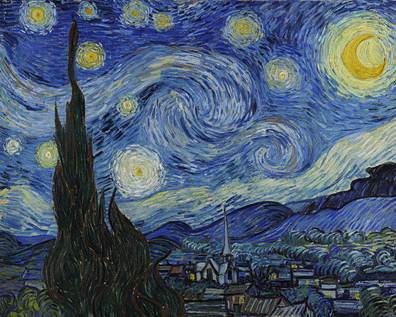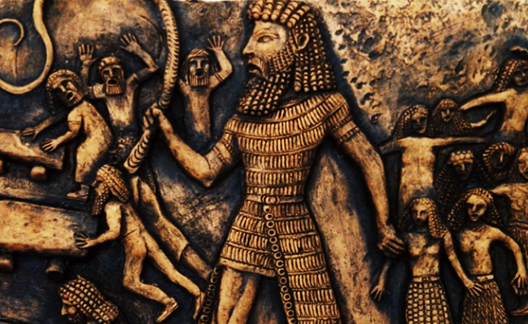A Parable for Today
Many years have gone by since I attended Muskingum College. Interestingly, it was there that I realized that I was right-brained. Right-brained people are creative. I loved art in general, along with art history. My favorite class in college, graduate and post-graduate school was The Arts, which I took at Muskingum. It was a ten-hour required course that could be taken in your junior or senior year. Fortunately, I took it in my junior year. I must have impressed Professor Louie Palmer, who taught the class. He called me into his office toward the end of that year and asked me to be his teaching assistant during my senior year.
I taught several subsections each week during my senior year. I wrote and graded the midterms and finals for both semesters. The opportunity of being Louie’s teaching assistant did more for me than any other academic experience in more than a dozen years of higher education. I learned that I could teach while I was being taught in college. I have been an instructor of a litany of humanities courses during the past three decades, but art history is my favorite.
There was another ten-hour requirement while I was at Muskingum. Everyone had to take a science class, either biology, chemistry, physics, or geology. I chose geology, which was a science class for students who weren’t into science. While science wasn’t my forte, I loved going on digs looking for trilobites.
In my twilight years, art and geology have morphed together for me. I have bought over a dozen Himalayan salt lamps for friends and family members in the last handful of years. In addition, I have accumulated three for myself. This is one of them.

There is a heated debate about the claims regarding the medical benefits of Himalayan salt lamps. Those selling salt lamps claim that they will improve one’s mood and sleep. Additionally, they will improve the air by removing allergens, toxins, bacteria, viruses, and other airborne pollutants. The salt lamp functions as a natural HEPA filter by zapping a litany of contaminants from the air. In addition, the salt lamp is inexpensive compared to buying a HEPA unit for your home, which could cost $4000.
The salt lamp proponents also claim that the lamps will produce negative ions for your home. A full-house negative ionizer could cost $6000. Also, if you are concerned about electromagnetic radiation, you can also buy devices that will neutralize radiation in your home.
I figure that the three salt lamps that I have may or may not deal with some or all the things floating around my home. Nonetheless, the benefits to me are that they calm me in the helter-skelter world in which I live.
The Himalayan salt lamps come from the Khewra Salt Mine, which is the largest and oldest salt mine in Asia. It is located in Pakistan. The tunnel in the mine is about a half-mile into the mountain. It is estimated that the mine is forty-three square miles of salt. Geologists estimate that 80-600 million tons of salt still remain. If you are thinking about purchasing a salt lamp, you won’t have to rush to Amazon with that much-unmined salt.

The creation of the salt mind is fascinating to me. This video starts today and slowly moves back one hundred million years ago. You will note that present-day India moved away from the Asian continent. In millions of years, India’s tectonic plate moved to the southeast area of southern Africa.
At 1:38 in the video, it has gone back one hundred million years and then reverses itself returning to the present day. By 2:00, the video shows how the large island in the shape of a triangle begins to move north again to Asia. By 2:30, India’s tectonic plates reconnected with Asia, which caused the island plate to slide above the Asian plate, causing two phenomena. It created the Himalayan mountain range. It also trapped a vast inland saltwater sea. Over time, the water evaporated, and the remaining salt and minerals were buried by the tectonic movement.

The Khewra Salt Mine is located in Pakistan. Two years ago, I was one of the 250,000 tourists that visited the mine. It is filled with various colored salt, ranging from white to red. The combinations of different colors were due to various percentages of some eighty minerals. For example, a large amount of iron caused the salt crystals to turn pink, orange, and/or red. Selenite mixed with iron creates a strong orange color.
As the fates would have it, I bought another Himalayan salt lamp. It didn’t look like what I had ordered. So, I wrote to the company explaining that it wasn’t what I ordered. It had large areas that looked scarred. After a couple emails, the company’s representative offered me a deal. He would send me another salt lamp like I had requested and offered me a discounted amount if I kept the one I wanted to return. The company didn’t want to pay the shipping cost for the returned salt lamp. I accepted the deal, and we were both happy. This is the salt lamp that was discounted for me.


There are two reasons why I accepted his offer. The first has to do with the artistic issues. The lamp seems to be contrasting the duality of the appearance of the lamp. Look at it one way; it is pretty. Turn the lamp around, and it isn’t lovely.
The second reason is that it is a present-day parable and metaphor of the world in which we live. Some people are seen as socially acceptable. Others, for various reasons, are not that fortunate. The lamp expresses that reality in life.
It is up to us to try to help the less fortunate. Racists, sexists, and xenophobic people fill our world. We should attempt to help them. We won’t be able to assist all those emotionally scarred people like the scarred salt lamp. However, helping some is better than doing nothing.
Follow @mountain_and_me











